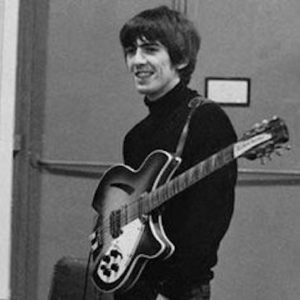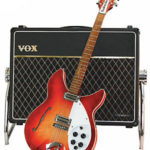The Early Experience

As Rock and Blues enthusiasts, our lives are deeply intertwined with the timeless essence of music. It’s a powerful force that resonates within us, an integral part of our very existence. Since our early years, we’ve been captivated by the transformative influence of music. The resounding beat of a bass drum, the compelling cry of a guitar, the emotive melody of a piano, or the delicate notes of a flute have the extraordinary ability to evoke profound reactions. Music has a unique way of bringing smiles, awe, and occasionally, even moving us to tears.
As we grow, our understanding and appreciation of music deepen. For those of us who choose to pursue careers as rock or blues artists, this connection evolves into an intense and unbreakable bond. It becomes a journey of self-discovery, where we explore the depths of our emotions and the broad spectrum of the human experience.
Instruments, the tools of our craft, become an extension of ourselves. They serve as the means through which we express our innermost thoughts, feelings, and experiences. The guitar, drums, keyboard, or any chosen instrument transcend their material nature; they are the vessels of our creativity and conduits for our emotions.
Through these instruments, we create melodies and rhythms that give life to our songs. Each chord, every beat, and every lyrical note is akin to the brushstrokes of a painter or the words of a poet. It’s how we externalize our inner world and communicate our stories to the world. The music we create is not just a collection of notes and lyrics; it’s an expression of our deepest sentiments, reflecting our experiences and fostering a connection with our audience.
Rock and blues artists are not just performers; they are storytellers, emotional conveyors, and masters of using sound as a form of expression. Through their instruments, they weave the tapestry of their lives, portraying triumphs, heartaches, and the essence of the human condition itself. This profound connection to music drives their passion, leading them to seek the perfect harmony that resonates with the hearts and souls of their listeners. In essence, music is not just an instinctual aspect for these artists; it’s an enduring part of their identity, a conduit for their innermost feelings, and a universal language through which they connect with the world.
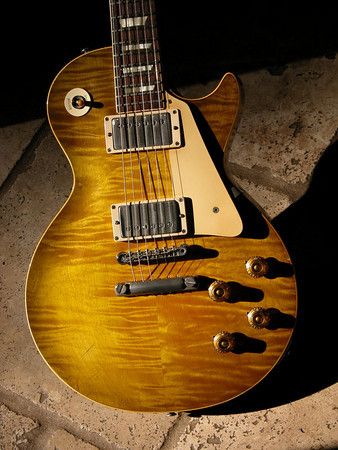
Gary Sings the Blues
Renowned Rock and Blues musician Gary is widely celebrated for his connection with the soulful sound of guitars, including the famous Gibson Les Paul. One guitar in his collection, the 1959 Gibson Les Paul Standard previously owned by Fleetwood Mac’s Peter Green, has gained legendary status, reflecting the historical bond between these musicians.
Gary’s Les Paul guitar collection includes the notable Les Paul Standard, affectionately known as “Stripe,” which played a significant role in the creation of his beloved track, “Still Got the Blues.” The emotional resonance and intricate tones of this guitar were pivotal in capturing the essence of the song, adding depth to his musical journey.
Gary’s profound dedication to the Gibson Les Paul, along with the historical significance of the 1959 Standard and the enduring association with “Stripe” in “Still Got the Blues,” underscores his artistic commitment and understanding of the instruments he uses. These guitars are not just tools of his trade; they are an essential part of his story, channeling his emotions and amplifying the intense vigor of his music.
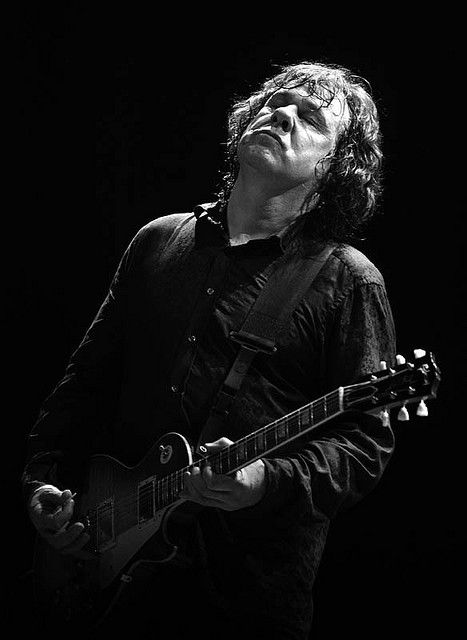
Unveiling the Mystique of a Rock/Blues Legend's Cherished Guitar - Stevie Ray Vaughan
In the realm of rock and blues, one icon stands out, celebrated for his masterful melodies and exceptional prowess with a guitar he affectionately called “Number One.” This cherished instrument, lovingly dubbed Vaughan’s “First Wife,” was none other than a 1963 Fender Stratocaster boasting a unique blend with a 1962 neck. Despite the wear and tear from years of relentless live performances, it remained a testament to Stevie Ray Vaughan’s unwavering commitment to his artistry.
The uniqueness of this legendary guitar lay in its amalgamation of a 1963 Stratocaster body and a 1962 neck. Vaughan’s emotional bond with the instrument led him to believe it was a 1959 Stratocaster, although concrete evidence for this claim remained elusive. This belief gained traction when he once removed the pickups and discovered their 1959 origins, solidifying the enigma surrounding its mythical history.
It wasn’t until 1980 that the skilled guitar technician, Rene Martinez, embarked on a quest to unravel the guitar’s secrets. Through meticulous disassembly, Martinez uncovered the truth behind its construction – the body bore the hallmark of 1963, while the neck unmistakably originated from 1962. This revelation shed light on the guitar’s true identity, yet it did not diminish its revered status as “Number One” or Vaughan’s profound connection with it. This served as a poignant reminder that the legacy of a beloved instrument extends far beyond its mere manufacturing date.
In commemorating the musical journey of Stevie Ray Vaughan and his cherished “First Wife,” we honor the timeless bond between a musician and his instrument, a connection that transcends the confines of time and technical specifications.
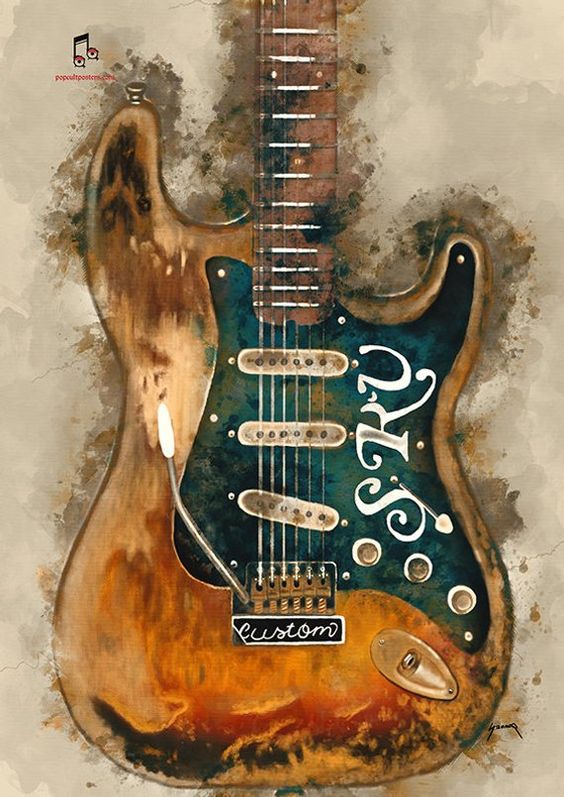
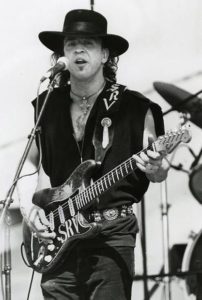
Rock / Blues Artists - Eric Clapton's gears
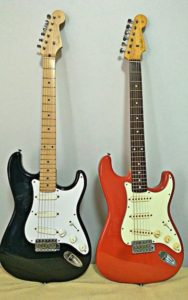
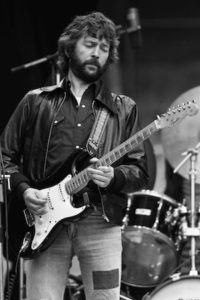
Explore the musical journey of the renowned Eric Clapton, born Eric Patrick Clapp on March 30, 1945, in Ripley, Surrey, England. This British musician made a lasting impact as a skilled guitarist, leaving an unforgettable legacy in the rock and blues scene of the late 1960s and early ’70s, ultimately establishing himself as a celebrated singer-songwriter.
Beginning with modest origins, Clapton’s initial venture into the world of guitars started with the Kay Jazz II model. By 1964, his musical career took a significant leap as he embraced the vibrant tones of a red Fender Telecaster, leaving a profound mark on the recordings he created during his time with the Yardbirds.
In 1966, a pivotal moment in his journey occurred when he acquired the renowned 1960 Gibson Les Paul Standard, affectionately known as “Beano-burst.” This iconic guitar, with its rich heritage and distinct sound, solidified its place as a symbol of that transformative era in music history.
A year later, Clapton’s musical exploration expanded as he incorporated the captivating melodies of a Gibson SG Standard into his repertoire. Affectionately named “The Fool,” this instrument was adorned with captivating colors and designs, showcasing Clapton’s evolving artistry and his openness to diverse musical influences.
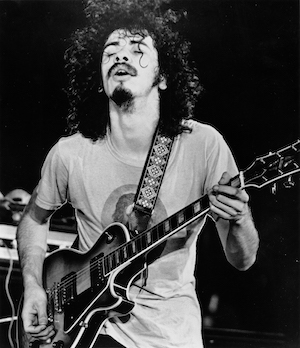
Santana - Latin Rock/Blues
Carlos Santana, a celebrated musician, has made a significant impact in the realm of rock music. Born on July 20, 1947, Santana gained prominence during the late 1960s and early 1970s as a prominent member of the band Santana. His unique blend of rock, Latin music, and jazz garnered notable attention. In the late 1990s, he experienced a resurgence in popularity, receiving critical acclaim and recognition, including a prominent place on Rolling Stone Magazine’s list of the “100 Greatest Guitarists of All Time” in 2003, where he secured the 15th spot.
Throughout his career, Santana has received multiple awards, including 10 Grammy Awards and 3 Latin Grammy Awards. His choice of guitars has evolved over time, starting with Gibson SG Specials featuring P90 pickups in the late 1960s, transitioning to Les Pauls in the 1970s, and briefly experimenting with the Yamaha SG2000. Currently, he exclusively favors PRS guitars. Santana’s musical journey underscores his commitment to innovation and excellence in the rock music field.
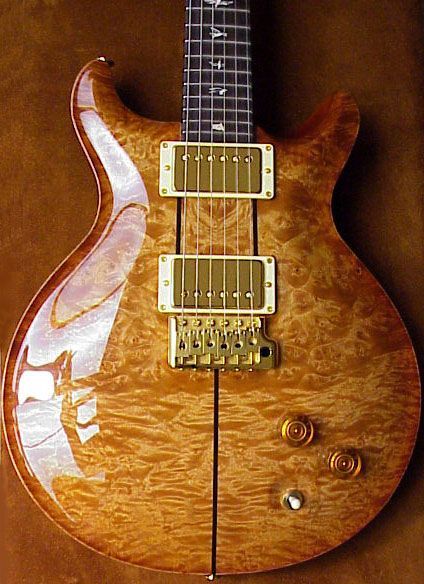
George Harrison, one of the famous Fab Four
George Harrison, a well-known musician, was born on February 25, 1943, in Liverpool, England. Unfortunately, he passed away on November 29, 2001, in Los Angeles, California, U.S. Harrison gained fame as the lead guitarist of the famous Beatles, a highly influential rock band. He was recognized as the “quiet Beatle” and achieved significant success as a solo artist after his time with the Beatles.
During his career, George Harrison was associated with various classic guitar models. In the 1960s, he contributed to the popularity of certain guitars such as the Rickenbacker 360/12 electric 12-string. He also played a role in promoting the rosewood edition of the Fender Telecaster and the Gibson J-160E acoustic/electric. In his solo career, he was known to favor guitars made by renowned luthier Tony Zemaitis, among others.
